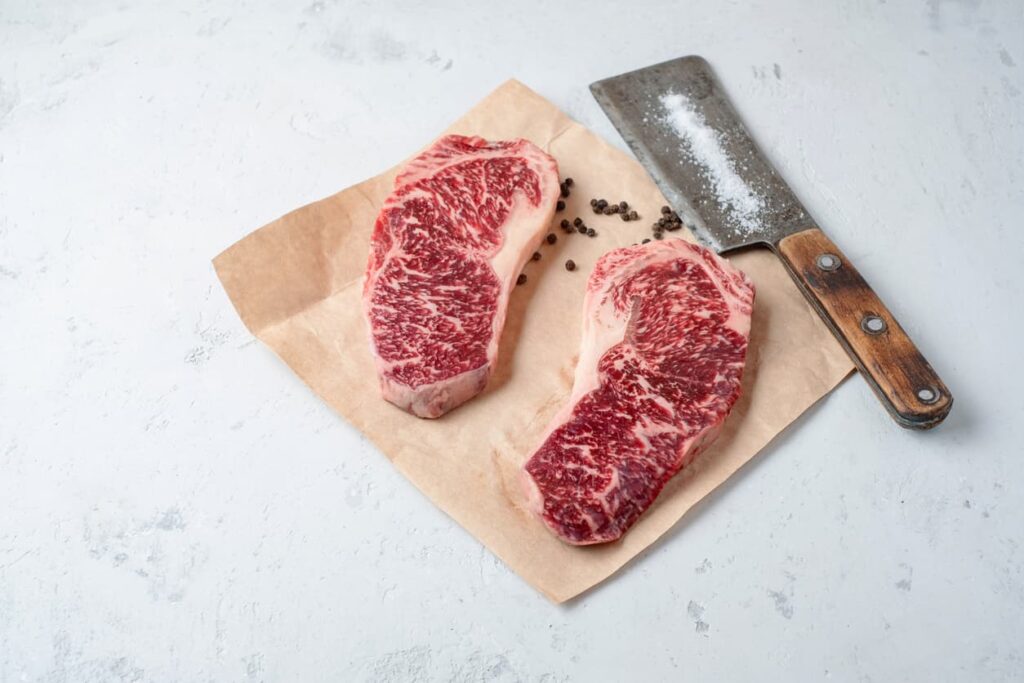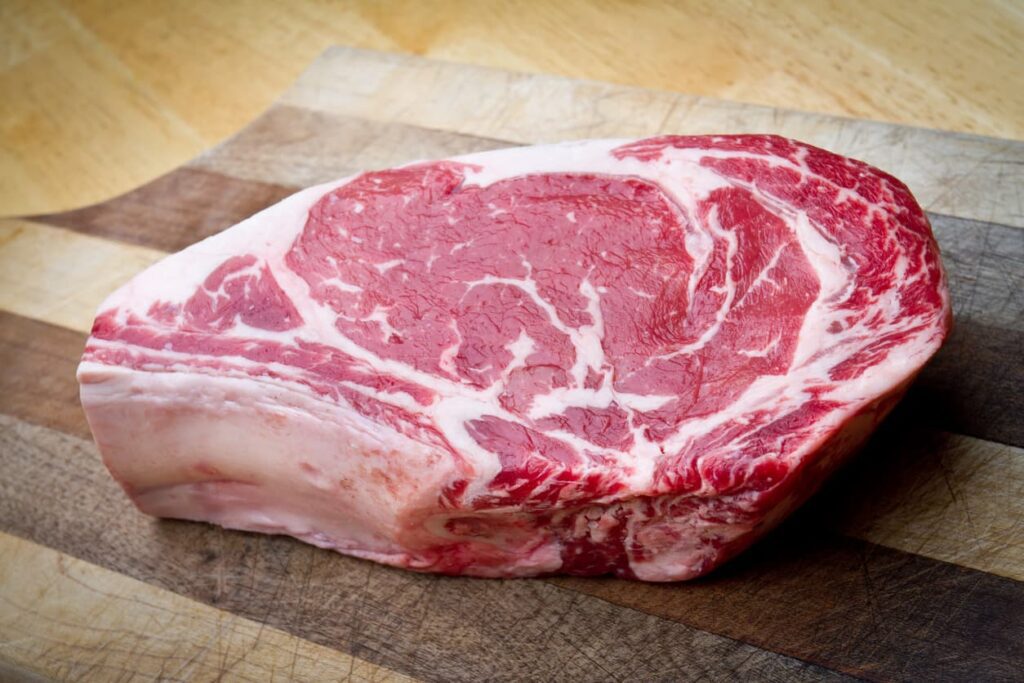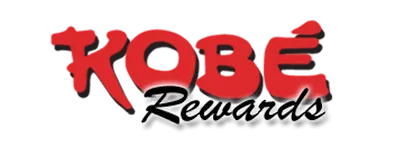There’s been a rise in Wagyu beef consumption, with the global Wagyu beef market expected to expand from $5.3 billion in 2025 to $8.2 billion by 2032. But why is this happening? What is Wagyu beef? More Americans are discovering the secret joys of this select Japanese cattle breed: a buttery flavor, tenderness, and health benefits. Think of Wagyu beef as the Bentley of meats.
Key Takeaways:
- Wagyu beef is a Japanese cattle breed, coveted by many upscale restaurants and distributors for its complex flavor profile and tender texture.
- Wagyu beef is farmed through specific breeding practices and animal welfare diligence for the highest quality meat.
- Wagyu beef has grading scales, a yield grade (A, B, or C), and a quality grade (1 to 5). The best Wagyu beef will have an A5 rating.
Get your taste buds ready, and maybe grab a plate, because we guarantee you’ll be searching “Wagyu beef near me” by the end of this blog.
What is Wagyu Beef?

Wagyu is renowned for its tenderness, marbling, and buttery flavor. It is crafted through specific breeding practices and attention to animal welfare that have been honed over centuries. As a cherished and revered part of Japanese culture, Wagyu beef represents the pinnacle of luxury meat.
Wagyu beef is also a healthier option compared to other meats due to having a low cholesterol level, even compared to chicken or fish. You can typically order Wagyu beef at high-end steakhouses (such as Kobé Steakhouse), sushi bars, or Japanese restaurants.
The term “Wagyu” directly translates to “Japanese cow.” All Wagyu cows are closely monitored throughout their life to ensure their meat is tender and balanced. Wagyu beef only refers to specific breeds of Japanese cattle, such as:
- Kobe: Kobe Wagyu is the most well-known, with the cattle growing up in Hyogo Prefecture raised on a diet of rice and corn. This cut is starkly well marbled with a rich texture.
- Matsusaka: Matsusaka Wagyu is made from virgin cows raised in Mie Prefecture in Matsusaka City. This cut has a high amount of fat marbling, though the fat is more evenly distributed compared to Kobe Wagyu.
- Omi cattle: Omi Wagyu is the oldest of the Wagyu varieties, with ties back to the Edo Era. This cut is typically thinly sliced with a grainy texture.
Marbling
The marbling, known as “shimofuri” in Japanese, is the most recognizable characteristic of Wagyu beef. This is what makes it so distinctive and luxurious. This intricate marbling refers to the fine, interwoven streaks of intramuscular fat distributed throughout the meat.
Unlike the surface fat seen in other types of beef, Wagyu’s marbling is deeply ingrained within the muscle, giving the beef a different appearance. This fat is responsible for Wagyu’s melt-in-your-mouth texture, as it cooks quickly, creating a buttery, rich flavor profile.
The development of this marbling occurs through a combination of:
- Selective breeding
- Specialized feeding practices
- Meticulous animal care
Wagyu cattle are often fed a diet high in energy and low in stress factors, allowing them to develop the high-fat content needed for their signature marbling. The attention given to each step of the process is a testament to the Japanese philosophy of “takumi” or craftsmanship, which prioritizes quality over quantity.
Flavor Profile
The flavor profile of Wagyu beef is celebrated for its depth, richness, and complexity. This sets it apart from any other beef. Thanks to the marbling, Wagyu has a uniquely buttery and velvety texture that almost dissolves in the mouth.
The marbling also contributes to Wagyu’s intense, savory flavor known as “umami,” which is often described as the “fifth taste” in Japanese cuisine. Umami imparts a subtle sweetness and full-bodied depth, enhancing the beef’s natural flavors and providing a more well-rounded taste.
As the fat melts during cooking, it releases flavorful oils that infuse the meat with a rich aroma and delicate sweetness. This makes every bite both flavorful and juicy without feeling heavy.
In regard to seasoning, Wagyu beef is often seasoned sparingly with salt or paired with light, traditional sauces to let the meat’s natural flavors shine. High-end chefs around the world echo this approach, respecting Wagyu’s complexity by highlighting rather than overwhelming it.
Kobe Beef vs. Wagyu
Kobe beef is typically the most sought-after type of Wagyu beef, due to its elaborate marbling, velvety texture, and stricter rating scale requirements. All Wagyu beef follows a grading scale to ensure quality. Wagyu beef is graded from C1 to A5, with A5 being the highest.
We will do a deeper dive into the Wagyu grading later on. It’s important to note that Kobe beef has stricter grading requirements, such as a higher marbling rating, to achieve an A5 rating.
This means Kobe beef is of higher quality compared to other Wagyu beef. This upscale flavor is reflected in the Wagyu’s price, with Kobe costing $200 to $500 per pound, and Wagyu beef being $50 to $150 per pound.
Wagyu Grading
In Japan, Wagyu beef is graded according to rigorous standards to ensure the highest quality and consistency. The Japan Meat Grading Association (JMGA) evaluates Wagyu based on yield, marbling, color, firmness, and texture. This system classifies Wagyu into quality categories and ranks. Here’s how the grading works:

1. Yield Grade (A, B, C)
The yield grade assesses how much usable meat can be obtained from a cow. The range is:
- A represents the highest yield,
- B represents an average yield, and
- C represents a below-average yield.
Yield grade is based on the percentage of meat from certain cuts and helps indicate the overall quantity of meat that can be produced.
2. Quality Grade (1 to 5)
The quality grade evaluates factors like marbling, color, firmness, and texture, with each factor rated on a scale from 1 to 5, where 5 is the highest. Each area listed below receives a separate grade.
Key Quality Criteria:
- Marbling: Marbling is rated on a scale from 1 to 12. Scores of 8-12 indicate highly marbled, premium-grade beef, characteristic of the finest Wagyu.
- Color and Brightness: The color of the beef is rated from 1 to 5, focusing on how vibrant and appealing the meat looks, typically aiming for a reddish-pink hue.
- Firmness and Texture: Firmness measures how solid the meat feels, while texture assesses the grain or consistency of the muscle fibers. Both are rated from 1 to 5, with higher scores indicating firm yet tender, fine-grained meat.
- Fat Color and Luster: The color and shine of the fat are also rated, as high-quality Wagyu fat should be white or creamy and glossy, contributing to the meat’s overall presentation and appeal.
The ratings are combined to produce a final quality score, with 5 being the highest grade possible. This gives you the…
3. Final Wagyu Grade
The yield and quality grades are combined to create a final grade for wagyu. The highest grade, A5, represents the highest yield and quality (A for yield and 5 for quality), signifying supreme marbling, color, firmness, and fat quality. Lower grades are acceptable but of lesser quality levels.
Extra: Regional Wagyu Certification
In addition to national grading, certain regions have their own standards for wagyu certification. Kobe, Matsusaka, and Omi Wagyu must meet strict regional criteria to carry the name, including specific lineage, raising practices, and even a unique ID system that allows tracking back to each cow’s origin.
Japanese Raising Wagyu
The Japanese have a meticulous and highly specialized approach to raising Wagyu cattle, focusing on techniques that enhance marbling, tenderness, and flavor. Here’s a closer look at how they achieve this:
1. Selective Breeding
Wagyu cattle come from only three specific Japanese breeds. Farmers carefully select cattle with ideal genetic traits to maintain and enhance the unique qualities of Wagyu. Sometimes, farmers track a cattle’s lineage for generations to ensure the best attributes are passed down.
2. Controlled Diet
Japanese Wagyu cattle are fed a special, high-energy diet that often includes a mix of rice straw, hay, wheat, corn, and barley. This feed is high in fiber and low in fat, promoting gradual growth and the development of intramuscular fat.
There are some that say beer is fed to the cattle. While that is not a normal practice, it has been known to happen depending on the farmers.
3. Stress-Free Environment
Stress can negatively impact marbling, so Wagyu cattle are typically raised in calm, spacious environments with minimal disruption.
In some cases, cattle are provided with massage and brushing to promote relaxation and improve muscle texture. Though, like the stories about cattle being fed beer, this is less common than sometimes portrayed.
4. Unique Climate and Environment
The regions where Wagyu are raised are known for specific climatic conditions that contribute to the beef’s unique qualities. Each region’s distinct weather, water quality, and vegetation can play a role in shaping the flavor and marbling of the beef.
5. Longer Raising Period
Wagyu cattle are raised for longer periods than most commercial beef, often between 28 and 36 months. This allows more time for the marbling to develop.
Many commercial cattle are processed at around 18 months. This extended raising period, along with the high-cost diet, is a significant factor in Wagyu’s high price.
6. Individual Attention and Monitoring
Wagyu farmers often treat their cattle with individualized care, monitoring weight, health, and even personality traits. Farmers closely observe each animal’s condition and adjust its diet and care based on specific needs to promote optimal marbling and flavor.
7. Regional Techniques and Traditions
Each Wagyu-producing region in Japan has its own techniques, feeding practices, and traditions that contribute to the local beef’s signature qualities.
For instance, Kobe beef is known for its finely marbled, delicate meat, which some attribute to the region’s mineral-rich water and specific feeding techniques.
The Wagyu Experience
Eating Wagyu beef is supposed to be a unique and luxurious experience. The moment a slice of Wagyu touches the tongue, it almost melts, thanks to the marbling that defines the meat.
The initial bite offers a buttery softness and tenderness that’s rarely found in other types of beef. As the meat warms, the fat dissolves to release rich, savory oils that coat the palate with a silky, umami-rich flavor. This flavor profile is both intense and balanced, with the fat delivering an earthy, slightly sweet richness that amplifies the beef’s natural flavors.
For many, the experience of eating Wagyu goes beyond taste. The care behind each cut, from the breeding to the cooking techniques, enhances the appreciation of each bite. As the flavors linger, Wagyu leaves a lasting impression—one that speaks to both the richness of Japanese culinary culture and the extraordinary craftsmanship that goes into producing it.
Try Authentic Wagyu Beef at Kobé
The good news is you don’t need to buy a plane ticket to Japan to experience Wagyu beef. Genuine Wagyu beef is served at Kobé Japanese Steakhouse, with 13 locations in the Central Florida and Tampa Bay areas. Call today to reserve your table before spots fill up.
We offer authentic A5 Wagyu beef cooked by our world-renowned chefs. Enjoy your Wagyu beef during one of our stunning hibachi dinner shows and watch as they cook your dinner to perfection.
